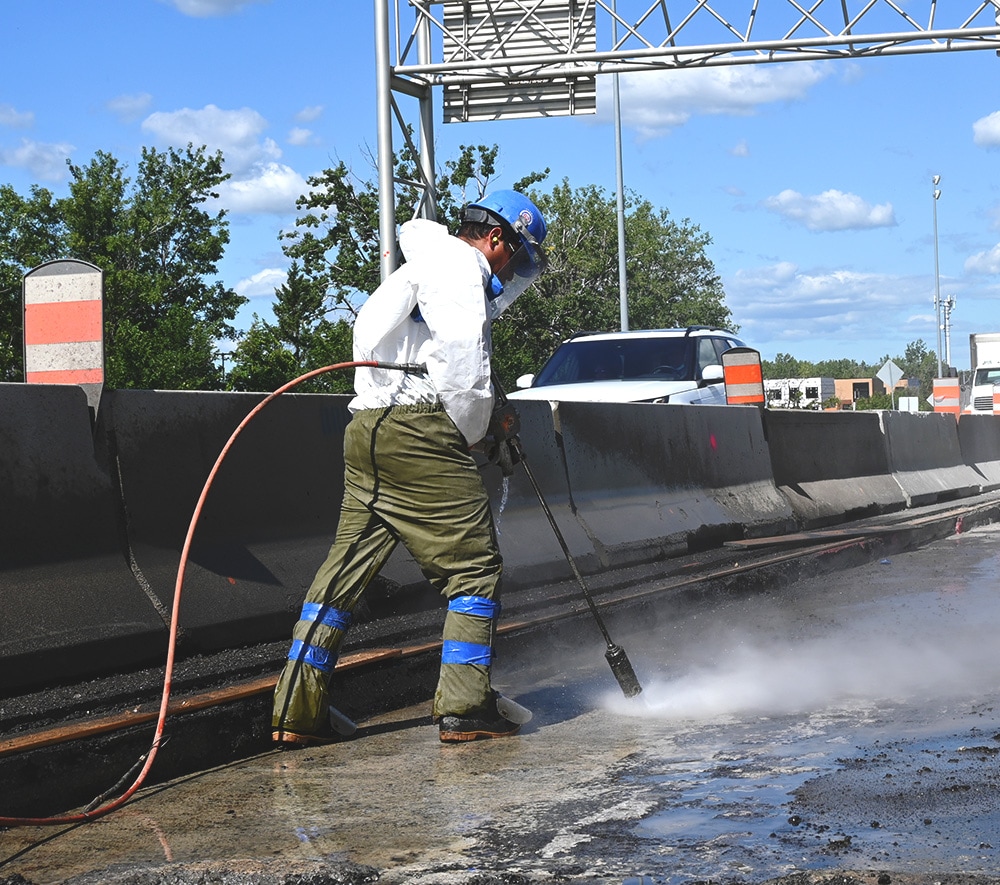Hydrodemolition is a concrete removal technique that destroys deteriorated concrete in sensitive structures such as buildings, bridges, tunnels or docks, without damaging the reinforcement. Capitalizing on the high porosity of concrete, it uses a very high-pressure water jet to penetrate the pores of the material and cause it to shatter.
In an industrial context, hydrodemolition significantly speeds up stripping and removal operations on a variety of surfaces, without damaging adjacent materials. It is mainly used for stripping concrete, preparing bridge deck surfaces for restoration and mechanically treating metal surfaces.
